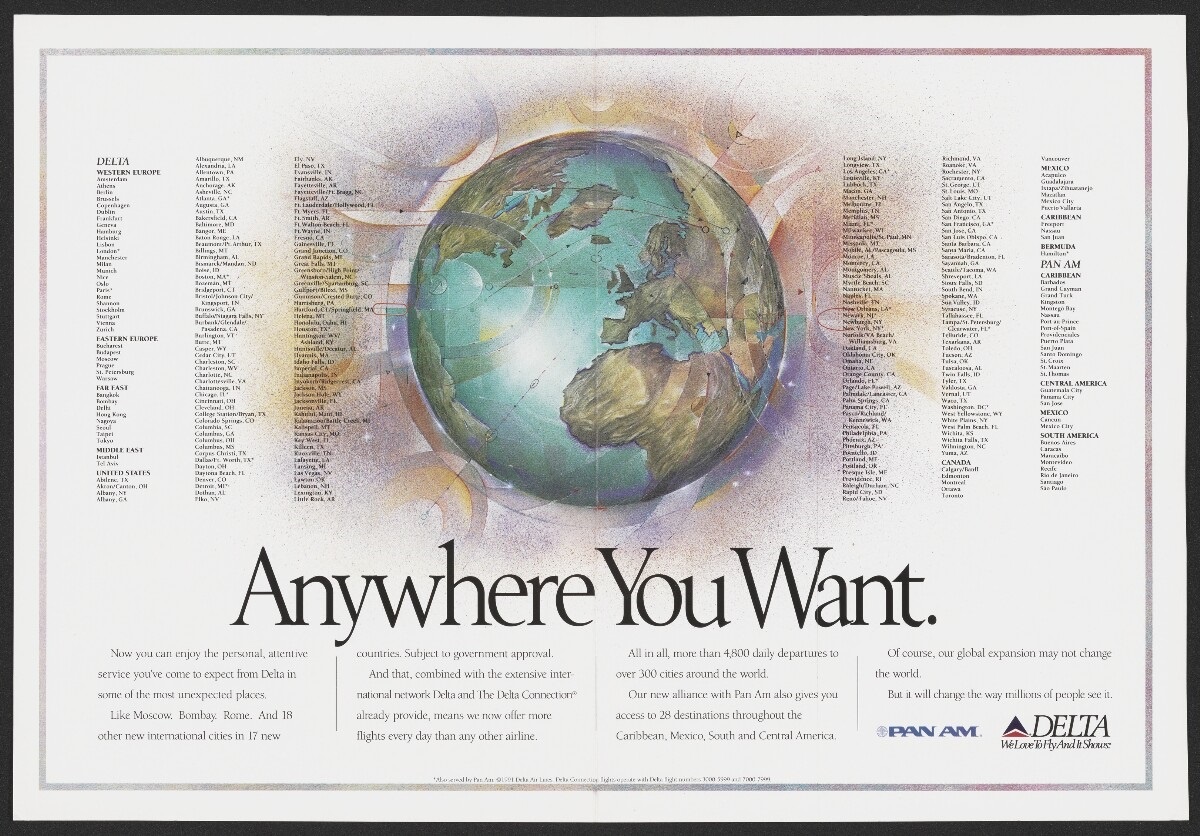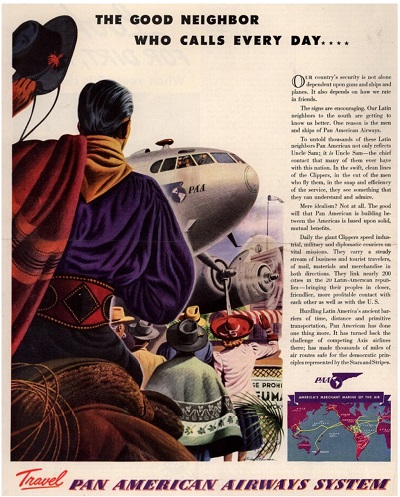Post contributed by Leah Tams, Pan Am CLIR Grant Intern.
For National Aviation Day, the Hartman Center for Sales, Advertising & Marketing History is excited to announce the launch of the Pan American World Airways Advertisements Digital Collection, which was supported with a Digitizing Hidden Collections grant from the Council on Library and Information Resources. The Pan American World Airways Digital Collection comprises over 6,500 advertisements from the Hartman Center’s collections, including the J. Walter Thompson Domestic Advertisements, J. Walter Thompson Frankfurt Office Advertisements, and Wells Rich Greene Inc. The digital collection spans most of Pan Am’s history, beginning with its World War II-era expansion and military involvement, and ending with Pan Am’s 1991 acquisition by Delta Airlines.

The Pan Am Digital Collection can be searched using free-text keyword searches, as well as through faceted searching by year, aircraft type (under the “Subject” search facet), language, departure and arrival locations, and source collection. Highlights from the Pan Am Digital Collection include:
- First passenger service across Pacific, Atlantic, to South America, etc.
- First jet service, including the debuts of the Boeing 707 and 747.
- Inaugural service between New York and Moscow.
- Noteworthy campaigns including the Clipper concept, “around the world service,” and the debut of new services such as in-flight entertainment.

The Pan Am Digital Collection is part of a larger collaboration with the University of Miami Libraries, who hold the corporate records of Pan Am, and HistoryMiami Museum, who hold artifacts from Pan Am. Together, our digitized materials and artifacts serve as the foundation of the Digital Public Library of America’s new aviation portal, Cleared for Takeoff: Explore Commercial Aviation. In addition to showcasing Pan Am’s history and impact on aviation, the DPLA portal also includes materials related to the broader history of other commercial aviation in America and associated airlines. The portal will eventually feature a chronological representation of Pan Am’s achievements and history through an interactive timeline, which is linked at the top of the portal. The timeline curates materials from each grant partner and puts otherwise disparate items in conversation with each other.
The DPLA Aviation Portal will eventually feature a Primary Source Set, curated by members from the Hartman Center, UMiami Libraries, and HistoryMiami. The Primary Source Set is meant for classroom use and focuses on how Pan Am impacted and “shrank” the world, encouraging critical thinking and analysis of primary source documents and touching upon numerous social, political, and cultural issues.
The Hartman Center is grateful to the Council on Library and Information Resources and The Andrew W. Mellon Foundation for funding this important project, as well as to our colleagues at UMiami Libraries, HistoryMiami, the DPLA, and our colleagues in Digital Collections & Curation Services and Conservation Services in Duke libraries.






